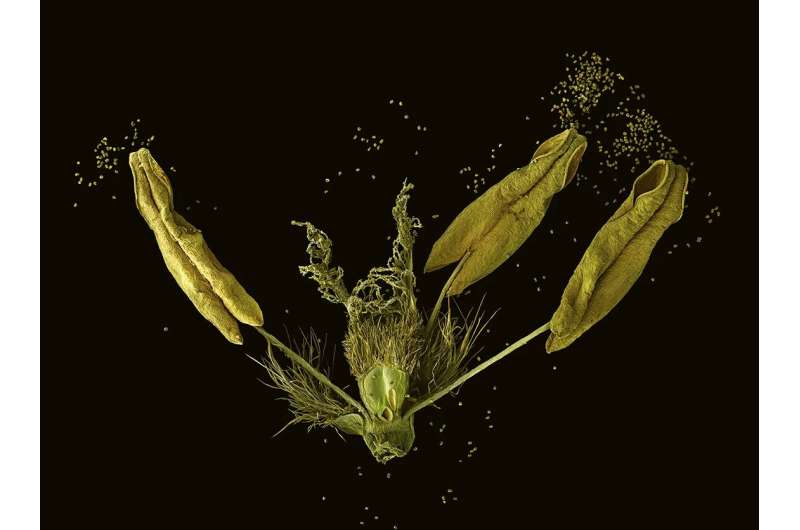The independence of pollen grains: A matter of energy

The pollen grains of maize, rice and all other cereals, need to store starch as energy deposit for later use during fertilization. A research team, led by Dr. Ivan Acosta from the Max Planck Institute for Plant Breeding Research in Cologne, Germany, together with colleagues from the Umeå Plant Science Centre, Sweden, the Max Planck Institute of Molecular Plant Physiology, Germany and Rutgers University, U.S. now identified the phytohormone auxin as a main driver for energy production during pollen maturation in barley.
The study, published in Current Biology, shows a direct link of auxin to pollen fertility, presenting an important tool to improve plant breeding and a major step towards sustainable agriculture.
After a long day of playing and running around outdoors, we sometimes wonder about the amount of food little children can take in. Depending on the circumstances, their need for energy varies. This variation in energy uptake also occurs very early in development, when our cells need to grow and mature, developing into their different functions. While switches in energy management, regulated by specific hormones and regulators, have been studied in animal cells in great detail, research during plant development stands at its beginnings.
Plants perform photosynthesis for their development and growth. During photosynthesis, carbon dioxide together with water and energy, in the form of light, are transformed to oxygen, glucose (sugar) and starch. The starch is stored as an energy deposit to guarantee that the plant continues to grow and develop when energy from light is not available.
Starch storage is also needed for the development and growth of cereal pollen. With no starch produced, the pollen is not fertile and the plant is unable to reproduce. But how and when the starch actually builds up in the pollen remained unclear.
A matter of energy
With all building blocks for starch production coming from the mother plant, making starch remains a question of energy as the limiting factor. In this study, researchers identified auxin as the essential hormone to boost the flow of energy during barley pollen maturation. Auxin is required to increase the output of the genes and pathways that generate energy in form of ATP, Adenosine triphosphate, the molecular unit of currency for energy transactions in cells. Thus, the presence of active auxin results in an increased flux of energy production pathways leading to high amounts of starch accumulation in the pollen.
Remarkably, by using advanced molecular genetic technologies, the team of scientists discovered, that barley pollen is able to produce auxin by itself, independently from the mother plant. They identified a pollen specific enzyme, namely HvYUCCA4, which is responsible for the last step of auxin synthesis. The researchers used a mutant plant called male sterile genetic 38 (msg38), where HvYUCCA4 is not functional, and the pollen is unable to produce auxin and store starch. As a result, the pollen of msg38 plants is non-fertile. With the help of this mutant, the team got further insights into the highly complex, time-sensitive set-up for making starch. To ensure successful pollen development, starch production needs to start at a particular point to be completed just before the pollen is released from the anther, the organ that produces and disperses the pollen. Auxin is a signal that coordinates the correct timing of these events.
Implications for agriculture
The findings emphasize how a deep biological understanding of crops will enable broad applications for the future of agriculture. A major step towards fertility control in barley and other crops and the development of new hybrid lines.
"Our discoveries will have a strong impact in both fundamental plant research and applied cereal breeding ", says Acosta. " Barley pollen will be a great model system to study auxin synthesis and signaling without the pleiotropic effects commonly associated with auxin deficiency in other plants. The very specific function of HvYUC4 in barley pollen development immediately suggests chemical inhibition of this particular enzyme as a method to control male fertility in cereal crops; such a strategy would enable large scale hybrid seed production between multiple parent pairs, a breeder's dream that remains unrealized."
More information: Dhika Amanda et al, Auxin boosts energy generation pathways to fuel pollen maturation in barley, Current Biology (2022). DOI: 10.1016/j.cub.2022.02.073
Journal information: Current Biology
Provided by Max Planck Society



















